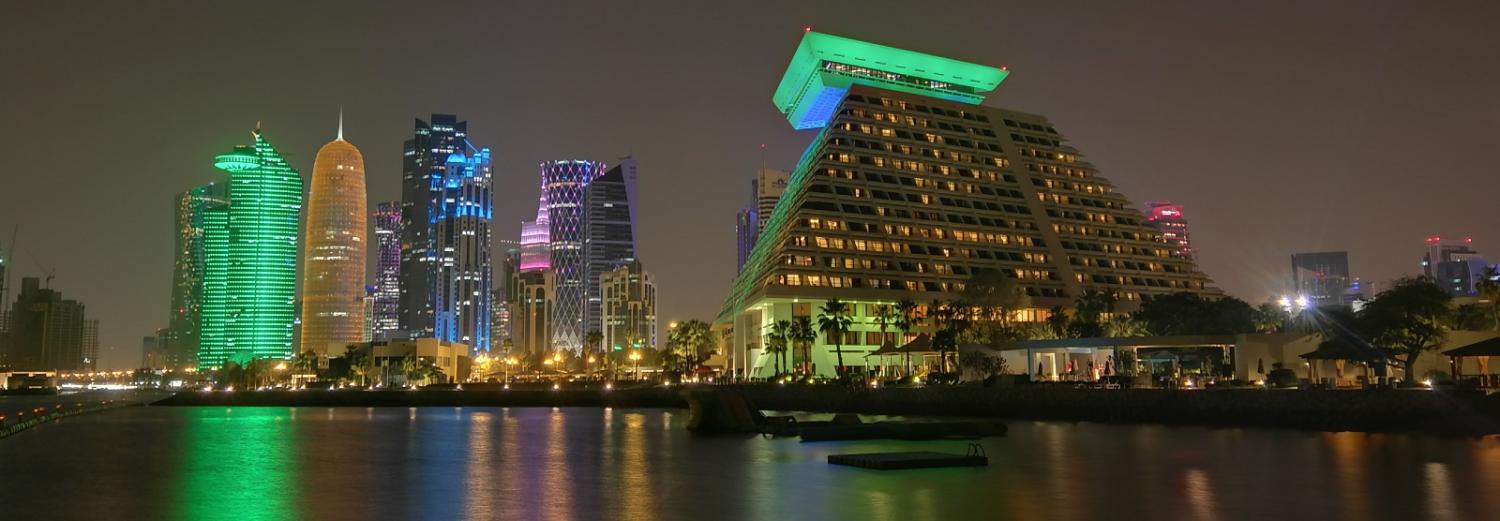It has been a year since Bahrain, Saudi Arabia, the United Arab Emirates, and Egypt severed diplomatic ties with Qatar. Saudi Arabia and the UAE led the boycott, instituting an economic and trade embargo that isolated Qatar by air, land, and sea from its neighbours, sternly restricting Qatari-bound traffic and trade.
Tensions between the Saudi–UAE axis and Qatar had been simmering for decades over Qatar’s distinctive foreign and economic policies in the region. Since the middle of the 1990s, Qatar has pursued an independent path of multidirectional policy balancing regional and global relations with a wide range of allies and adversaries of Saudi Arabia.
On the one hand, Qatar boasts amicable relations with the US and European powers, hosting a strategic American base and playing an integral role in the fight against ISIS in the region. On the other hand, Qatar’s reliance on natural gas has dictated a delicate economic and political approach towards Iran, with which it shares the world’s largest natural gas field.
But the rift between Qatar and its neighbours was widened, perhaps beyond repair, by regional ruptures and cleavages engendered during and after the Arab Spring. While the Saudi–UAE axis struggled to maintain the status quo across the region in 2011, Qatar embraced the revolutionary waves and deployed its soft power, represented by news broadcaster Al Jazeera, and tangible support to populist Islamist parties in Egypt, Libya, Palestine, Syria, and Tunisia.
Saudi Arabia viewed the Arab Spring as an existential threat to the region’s political composition, and, along with the UAE, bankrolled the reinstatement of much of the pre-2011 order by 2014.
That was also the year that Bahrain, Saudi Arabia, and the UAE briefly withdrew their ambassadors from Qatar over its Arab Spring policies. Although this quarrel was reconciled within months, Qatar has since pursued a vigorous policy of diversified economic and diplomatic relations, strategically hedging against future tensions from its larger and more powerful neighbours.
Leveraging the vast resources of Qatar’s sovereign wealth fund, Qatari leaders had established a network of economic investments across Europe and North America. But in 2014, Qatar started to shift its investments exposure from developed to emerging markets. It has since invested billions in China, Japan, South Korea, ASEAN, India, and Russia.
But perhaps the most interesting development has been Qatar’s rising investment portfolio and bilateral economic cooperation with China.
Months after the 2014 diplomatic rift, Qatar’s sovereign wealth fund set up a $10 billion fund to invest in China’s healthcare, infrastructure, and property sectors; invested $616 million in a leading Chinese luxury retailer; and announced its intent to invest another $15–20 billion in Chinese real estate and infrastructure over the next five years. This followed a $2.8 billion cornerstone investment in the Agricultural Bank of China’s initial public offering in 2010.
Qatar’s pivot towards China has further been strengthened by the country’s decision to exempt visa requirements and issue permanent residency to Chinese nationals. It also boasts the region’s only currency-swap agreement with the Chinese central bank, and hosts a renminbi clearing and settlement centre. The centre is thought to be beneficial for facilitating cross-regional trade between the gulf and Asia, as cross-border trade and investment in renminbi have experienced recent growth.
But the central theme of cooperation between the two nations lies in the energy sector; here the strategic significance of Qatar to China’s security will be shaped by Qatar’s uninterrupted and expanding supply of natural gas to fuel China’s rising demand for energy.
Qatar is the second-largest natural gas provider to China, supplying more than 20% of its needs. Qatar Petroleum, the country’s state-owned oil and gas company, has joint ventures with several Chinese counterparts, including exploration, production, and refining projects in Qatar and China.
Trade statistics reveal a 45% increase in trade volume between Qatar and China in the first quarter of 2018 compared to the same period in 2017. China surpassed the US to become the biggest exporter of goods and services to Qatar in 2018, while Qatar’s exports to China surged by more than 60%.
China’s share of Qatar’s total trade rose by 27% during the same period. Furthermore, China is extensively involved in the infrastructure boom in Qatar, playing an integral part in the construction of the Lusail Stadium for the 2022 FIFA World Cup, Hamad Port in Doha, and other infrastructure works across the country.
Finally, Qatar appears to have been expanding its bilateral relations with China in the security paradigm, having covertly acquired the SY-400 short-range ballistic missiles sometime last year.
The Qatari–Chinese relationship is expected to continue to deepen, strengthened by a complex network of interdependence based on energy, investments, and security cooperation. It is part of Qatar’s policy of strategic hedging, fostering relations with a diverse list of allies outside of the increasingly fractured Gulf Cooperation Council.

